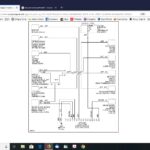The Honda H22A4 engine, a popular choice for enthusiasts, often raises the question: OBD1 or OBD2? While both have their merits, understanding the differences is crucial for choosing the right setup. This article explores the key distinctions between OBD1 and OBD2 H22A4 engines.
OBD1 systems, generally found in older H22A4 engines, are often favored for their simplicity and ease of modification. Swapping components, particularly engine management systems, is often less complex with OBD1. Additionally, some prefer the closed-deck block construction found in certain OBD1 H22A engines, though the practical advantage of this feature is debatable for most applications.
However, finding a complete OBD1 H22A4 engine and associated parts can be more challenging today. OBD2 engines, more prevalent in later model vehicles, are generally easier to source. While OBD2 systems offer more sophisticated diagnostics and emissions controls, they can be more complex to modify.
When considering transmission options for an H22A4 swap, opting for a standard non-Limited Slip Differential (LSD) transmission like the M2F4 and adding an aftermarket LSD is often recommended. Aftermarket LSDs frequently outperform original equipment manufacturer (OEM) LSDs, especially in older vehicles where the OEM LSD might be worn. Furthermore, sourcing parts for OEM LSDs, particularly those not originally sold in the US market, can be difficult. Aftermarket LSD units offer wider availability and often superior performance.
While the Euro R variant of the H22A is considered by many to be the pinnacle of the H22A family, its high cost and potential for counterfeit units make it a less practical choice for most. Building a comparable setup using a less expensive H22A and aftermarket modifications can often achieve similar or even greater performance for a lower overall investment. Moreover, readily available parts support for standard H22A engines in the US simplifies maintenance and repairs. The Euro R, while impressive, may present challenges in sourcing specific replacement parts.
A popular and effective build often includes a JDM H22A engine, a USDM P13 ECU for initial compatibility, an M2F4 transmission equipped with a Quaife or MFactory LSD. Further enhancements might include Delta 272 camshafts, a DC Sports header with a 2.5″ collector, a Euro R intake manifold, and a tuned P28 ECU with a performance chip.
Ultimately, the choice between OBD1 and OBD2 for an H22A4 swap depends on individual priorities and project goals. While OBD1 offers simplicity and ease of certain modifications, OBD2 provides greater parts availability and more advanced diagnostics. Careful consideration of these factors will guide builders to the optimal decision for their specific needs.

